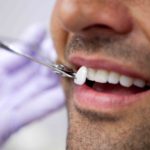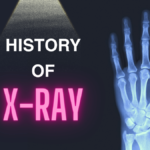Every woman goes through multiple phases in her life which are often associated with a drastic change in her hormonal orientation. One such stage is Menopause. Though natural, menopause can take a heavy toll on a woman’s regular lifestyle. To deal with it, many women are today opting for Hormonal Therapy or Hormone Replacement Therapy.
No matter which term you use to refer to it, Hormonal Therapy is introducing additional hormones such as estrogen and progesterone to supplement the declining hormonal levels in the female body.
The two types of Hormonal Therapy include Estrogen-only Therapy (ET) and Estrogen plus Progestogen Therapy (EPT). ET, on one, had is prescribed to women without a uterus due to hysterectomy. EPT, on the other hand, is given to women with a uterus to protect them against uterine (endometrial) cancer.
The treatment may last for 3-5 years and has the following risks and benefits associated with it.
Benefits of Hormonal Therapy
Hormone Replacement Therapy for Menopause can relieve you from its usual effects such as Hot Flashes, Vaginal Dryness, and Night Sweats. Additionally, the treatment is helpful for women with a weakening bone density and helps to prevent osteoporosis. Reduced loss in bone density also results in lowered tooth loss, stronger joints, and less pain. It brings back the natural sense of well-being in the woman along with mood enhancement.
Apart from the above benefits, many serious issues such as risks of developing diabetes and colon cancer are also lowered in patients under hormone therapy. For the best advice, you can visit HGH Doctor and see what people have to say about us. It has also been advised as add-on therapy for heart diseases.
Risks Associated with Hormonal Therapy
Like other treatments, Hormonal therapy comes with risks associated with it.
- There is an increased risk of developing endometrial cancer in women who are taking ET without Progestin.
- As the hormones are introduced in blood, women are put at a higher risk of blood clots and heart strokes. However, if the hormones are introduced via patches and skin creams, this risk can be avoided to a great extent. Plus, the studies didn’t discover much risk of heart strokes in women within five years of their menopause.
- Gallstones or stones in gall bladder are other risks.
- Risks of this therapy are also associated with breast cancer.
- When the women start the treatment after they have been in menopause for more than ten years, the risk of dementia increases. The benefits of Hormonal therapy in women who start in their 50s are still unknown.
The therapy can be administered in 2 ways. The first one being the introduction of the hormone systematically in the bloodstream through oral tablets, gel, emulsion, patches, sprays, or injections. The second way is to bring them in locally through creams, rings, or pills. Local or non-systematic practice can be used to cure vaginal issues.
It is advised to opt for the minimum effective dose for the shortest period to reduce the exposure to health risks associated with hormonal therapy.
The studies have shown that women taking ET and don’t have a uterus have a more favorable outcome of the hormonal therapy than others. Then too, when taken with proper guidance, the treatment can help women a great deal.











